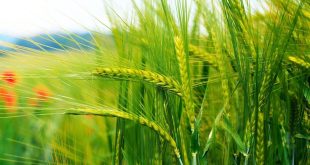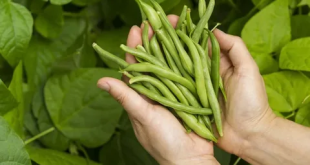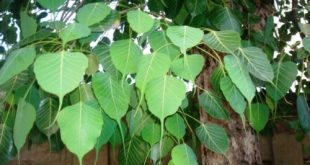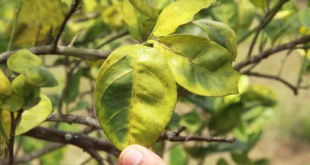What is a Tea Jungle? A tea jungle refers to a natural, unaltered environment where tea plants (Camellia sinensis) grow in their wild, native form. Unlike traditional tea plantations, which are highly controlled and cultivated, tea jungles thrive in humid, tropical, and subtropical climates.
These jungles are rich in biodiversity, where the tea plants coexist with other flora and fauna, creating a sustainable, balanced ecosystem. Let’s delve into the post and get to know about What is a Tea Jungle? and discover the fascinating World of tea plantations.

The Origins of Tea Plantations:
Tea has a long history, originating in China as early as 2737 BCE. The first tea gardens were typically located in the wild, surrounded by dense forests and jungles. It was only later that tea cultivation began to spread to various parts of Asia and the world, transitioning from natural jungles to more controlled farming environments.
The Unique Ecosystem of a Tea Jungle:
A tea jungle is characterized by its diverse plant life, fertile soil, and natural water sources. The wild tea plants grow under the canopy of larger trees, receiving indirect sunlight and benefiting from the shade, moisture, and nutrients provided by the forest. This jungle-like environment allows the tea plants to thrive without the need for synthetic fertilizers or pesticides.
Key Features of Tea Jungles:
- Biodiversity: Tea jungles support a wide variety of plants, animals, and insects, contributing to a healthy ecosystem.
- Organic Growth: The tea plants in jungles grow organically without the use of chemical fertilizers or pesticides.
- Sustainable Practices: Natural water sources and traditional farming techniques make tea jungles more sustainable compared to modern farms.
Benefits of Tea Jungles to the Environment:
Tea jungles play a significant role in preserving the environment. They help maintain soil fertility, prevent erosion, and conserve water resources. The trees in the jungle also provide shelter for wildlife, enhancing biodiversity. Additionally, by growing tea in these natural environments, farmers can reduce their reliance on harmful agricultural chemicals.
Tea Jungle vs. Traditional Tea Farms:
While traditional tea farms are often monocultures, tea jungles offer a more diverse and natural ecosystem. In tea jungles, the tea plants are part of a larger ecological system, with minimal human intervention. Conversely, traditional farms are typically managed through regular pruning, irrigation, and the application of fertilizers and pesticides.
Tea Jungle vs. Traditional Tea Farms: Key Differences:
| Feature | Tea Jungle | Traditional Tea Farm |
|---|---|---|
| Ecosystem | Biodiverse | Monoculture |
| Maintenance | Minimal | High intervention |
| Environmental Impact | Low impact | Higher environmental cost |
| Production Methods | Organic | Conventional farming practices |
Global Locations for Tea Jungles:
Tea jungles are found in tropical and subtropical regions around the world. India, Sri Lanka, Taiwan, and parts of China are well-known for their wild tea-growing regions. These tea jungles are often found in remote and hilly areas where commercial farming is less practical.
Types of Tea Grown in Tea Jungles:
The types of tea grown in tea jungles include green tea, black tea, and oolong tea. Since the plants grow in their natural environment, the flavor profiles of the teas produced are often more complex and unique than those grown on commercial farms.
Organic vs. Conventional Tea from Jungles:
Tea from jungles is often organic, as it grows naturally without the aid of synthetic chemicals. Organic tea from tea jungles is prized for its purity and rich flavor, often commanding higher prices on the market. In contrast, conventional tea farms may use chemical fertilizers and pesticides to increase production yields.
Challenges in Tea Jungle Farming:
While tea jungles offer numerous benefits, they also come with challenges. The remote locations and unpredictable climate conditions can make harvesting difficult. Additionally, maintaining the balance of the ecosystem without disturbing the natural habitat is a delicate task for farmers.
Climate and Soil Conditions:
Tea jungles thrive in areas with specific climate conditions. They require high rainfall, moderate temperatures, and rich, well-draining soil. These conditions are typically found in tropical and subtropical regions at high altitudes.
Preservation of Tea Jungles:
Efforts are being made to preserve the natural environments where tea jungles grow. Sustainable farming practices, along with government policies and global awareness, are helping to protect these valuable ecosystems. Organizations are promoting organic tea farming to ensure the health of tea jungles for future generations.
The Economic Impact of Tea Jungles:
Tea jungles contribute significantly to the economy, especially in regions where traditional farming is not viable. By harvesting tea sustainably and organically, farmers can attract a niche market willing to pay a premium for high-quality, eco-friendly tea.
Sustainable Practices in Tea Jungle Farming
Sustainability is a core principle of tea jungle farming. Techniques such as rainwater harvesting, crop rotation, and natural pest control are employed to reduce the environmental impact of tea cultivation. These practices help conserve resources and protect the surrounding ecosystem.
FAQs
- What makes tea jungles different from regular tea farms? Tea jungles grow in a natural, biodiverse environment, while regular tea farms use monoculture practices and rely on intensive farming methods.
- Is tea from jungles organic? Yes, tea from jungles is often organic, as it grows naturally without the use of synthetic chemicals.
- Where can tea jungles be found? Tea jungles are primarily found in tropical and subtropical regions such as India, Sri Lanka, Taiwan, and parts of China.
- What types of tea are grown in tea jungles? Green tea, black tea, and oolong tea are commonly grown in tea jungles.
- How does a tea jungle benefit the environment? Tea jungles help maintain biodiversity, prevent soil erosion, and conserve water resources.
- Are there challenges in maintaining tea jungles? Yes, tea jungles face challenges such as difficult terrain, unpredictable climates, and the need to balance ecosystem health with tea production.
Conclusion
Tea jungles represent a fascinating and sustainable approach to tea cultivation. By maintaining a natural ecosystem and avoiding chemical interventions, tea jungles provide a unique and environmentally friendly alternative to traditional farming. As global demand for organic and sustainable tea continues to rise, tea jungles will remain an important part of the tea industry, offering rich flavors and environmental benefits for generations to come.
Read More:
All You Want to Know about Al Kbous Fine Black Loose Tea



